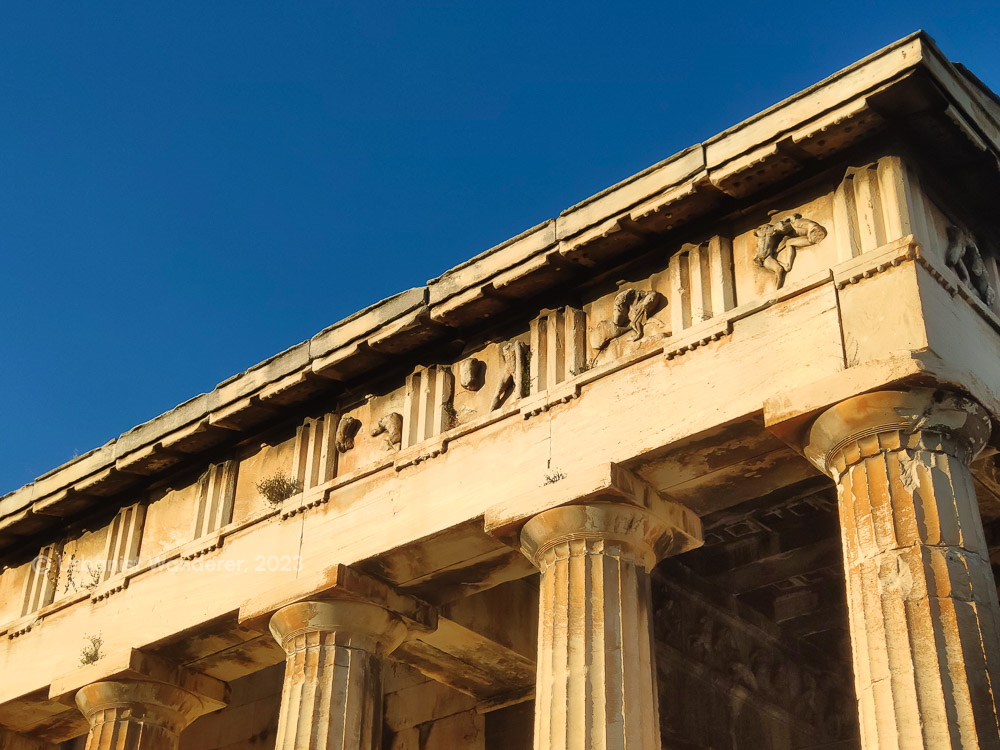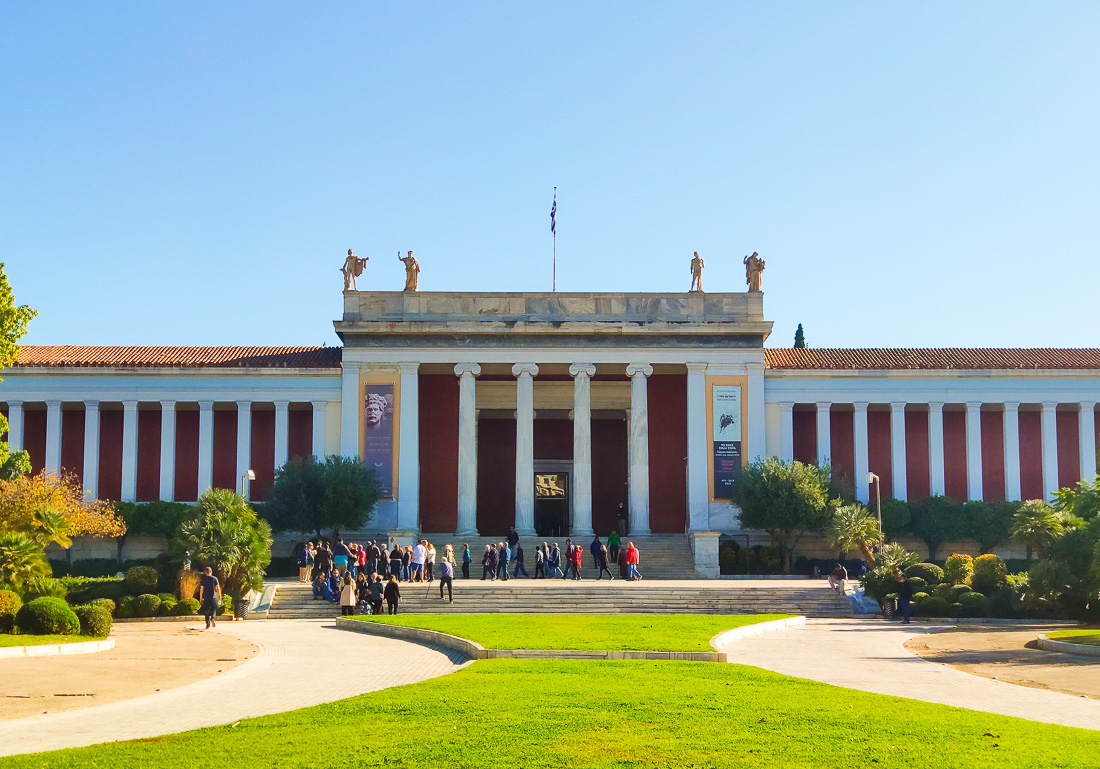The National Archaeological Museum in Athens is Greece’s premier archaeological museum, well known for its rich collection of Ancient Greek artefacts.
What’s at the National Archaeological Museum
The artefacts housed at the Museum range from the prehistoric era to late antiquity and hail from all corners of the Greek world of antiquity. The vast collection affords visitors an introduction to the extent of Ancient Greek history beyond the more famous ancient ruins in Athens, and serves as a reminder that ancient Greece is more than just the marble temples and sculptures.
Mycenaean Collection
The first gallery that visitors walk through is the Mycenaean gallery, hosting artefacts from the eponymopus Mycenaean civilisation that existed from approximately 1750 BC to 1050 BC. Some of the more well known collection of artefacts are the Mycenaean artefacts from the Bronze Age site of Mycenae in Argolis. These include the famous gold funerary mask commonly known as the “ Mask of Agamemnon”, and the “Mycenaean Lady” fresco featuring a woman in a procession of some kind.


The gallery itself is quite compact, but the choice of exhibits do give a good overview of the Mycenaean civilisation. It also doesn’t hurt that the the gallery layout seems to focus on displaying as many artefacts as possible in the space.

The Wall Paintings of Thera (Santorini)
The Museum is also host to a number of frescoes excavated from the Akrotiri archaeological site on the island of Thera, also known as Santorini. Akrotiri is a Cycladic settlement that existed from between 5000 BC to 4001 BC, to the 16th century BC when it was destroyed by the eruption of the Theran volcano in an event known as the Minoan eruption. The resulting flow of volcanic ash buried the settlement and ensured its preservation for thousands of years.

The frescoes are renowned for the vibrancy of their colours that still survive to this day, and for the glimpse it provides into the Aegean culture of Santorini. Four of them are on display at the Museum, namely the Flotilla Fresco, the Spring Fresco, the Boxer Fresco, and the Antelopes Fresco.


Sculptures and Pottery
The Museum hosts a vast collection of sculptures. This collection includes some well known ones like the Artemision Bronze (a sculpture representing either Zeus or Poseidon), the Varvakeion Athena (a Roman era replica of the Athena Parthenos that once stood on the Acropolis), the Poseidon of Melos, and the Group of Aphrodite, Pan, and Eros.




There is also significant exhibition space dedicated to pottery, and it is quite possible to spend a lot of time going through each and every one of them.


Visitor Information
Location and Public Transport access
The Museum is located on Patission Street (Οδός Πατησίων), or to be precise on the stretch renamed 28 Oktovriou Street after Oxi Day. The area is quite walkable, and the nearest Athens Metro station is Viktoria (Βικτώρια) on Line 1 (Green). The walk between Viktoria and the Museum takes about 15 minutes and is a pretty pleasant one.
Ticket Prices
Tickets can be purchased from the counter via cash (Euros only) or card, and alternatively on the Museum’s website.
| Period | Ticket Cost (€) |
|---|---|
| April to October (Summer) | 12.00 |
| November to March (Winter) | 6.00 |
You can also spend €15.00 for combined ticket package valid for 3 days. This gives you access to four museums: The National Archaeological Museum, Epigraphic Museum, Numismatic Museum, and the Byzantine & Christian Museum of Athens. I personally don’t think its worth it unless you really want to visit the other three museums.
There are also free admissions to the site on the following days:
- 6 March (in memory of Melina Mercouri)
- 18 April (International Monuments Day)
- 18 May (International Museums Day)
- The last weekend of September annually (European Heritage Day)
- 28 October (Oxi Day | Ημέρα του όχι)
- Every first Sunday from November 1st to March 31st (Winter Months)
Opening Hours
| Months | Days | Time |
|---|---|---|
| November – March | Tuesday | 1:00 pm to 8:00 pm |
| Wednesday to Monday | 8:30 am to 3:30 pm | |
| April > October | Tuesday | 1:00 pm to 8:00 pm |
| Wednesday to Monday | 8:00 am to 8:00 pm |
External Links
For more information, please visit the official website of the National Archaeological Museum.


Leave a Reply